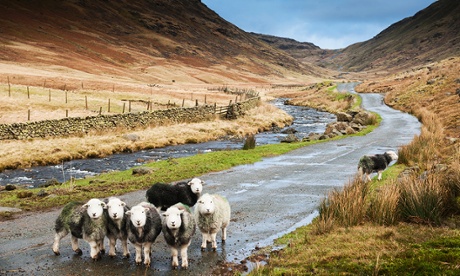
Harry Berger can remember the first time he came over Wrynose and Hardknott, two passes into the Eskdale Valley in the Lake District. He’d got as far as Elterwater, close to the start of Wrynose, and had 20 minutes to reach his appointment. It was his first encounter with the physical geography of the passes and like many before him, he found that the contours of a map entirely failed to capture the reality of the roads. As Berger puts it: "It doesn’t matter how many circles you put on a map, you don’t realise how steep it is."
After negotiating his way up and down the steep ascents and descents and round the hairpin bends to the valley, he had already written it off as a place where he might invest in a pub business: "I did Wrynose, I was following a snail and I overtook him and I came down the [Hardknott] pass and thought forget it, I might as well go home, nobody’s ever going to come here. I walked into The Boot Inn and it was heaving – there were about 100 people in there in the middle of June on a Tuesday. I turned round and said, 'Where the hell has everybody come from?'"
He had counted only four cars in the car park: "They had come off the train, they had come off the fells, come from everywhere." Not only was it Berger’s first encounter with Wrynose and Hardknott, but it was also the first and last time he overtook someone on the stretch of road. That was in June 1998 and later that year he, his wife Paddington and their two children moved to The Boot Inn. They now own and run the Woolpack Inn, further along the valley. Berger says he never wants to leave Eskdale but he’s had to adapt to the unique landscape, explaining that you must accept you’re a long way from anywhere else.
Berger’s first experience of driving over Wrynose and Hardknott isn’t unusual. The twin passes are often crossed on the same journey – from Little Langdale to Eskdale – but Alfred Wainwright warned that drivers who have come over Wrynose from the east must expect "a much stiffer climb" over Hardknott and should approach it with "the utmost concentration". Hardknott is often described as the most difficult road in Britain. But Berger sees it slightly differently: "The description that we’ve coined for them – Hardknott and Wrynose – is they’re Britain’s or England’s two most outrageous roads. They’re not necessarily the steepest or highest, but they’re the most outrageous."
Cockley Beck farmhouse was built in the late 1860s and stands at the point where the feet of the two passes meet. Today it belongs to the National Trust and is occupied by farmer Kevin Wrathall, his partner Sandra Swainson and their two daughters. The summer brings a constant stream of people to their home. "I prefer the winter to the summer when people come knocking on the door," says Wrathall. "They’ve blown a tyre off or they’re lost. 'Can we borrow your toilet?', 'can we have a drink?'. If it’s an emergency I don’t mind at all but if it’s just changing their tyre they should be able to get on and do it." Modern reliance on mobile phones means that when visitors find themselves without a signal, they’re flummoxed.
Some of Wrathall’s experiences would have tested anybody’s patience, such as when some young walkers who’d bitten off more than they could chew during an expedition came calling. "We had some lads knock on the door, quarter past four in the morning. They said they were tired, they were a long way from anywhere and would I take them over to Langdale." Wrathall’s response isn’t recorded. But he is there for people in need: "You can see it on their faces if it’s a real emergency."
Taking on Cockley Beck was an opportunity for Wrathall, formerly a self-employed farm worker, to run a decent fell farm with his own Herdwick flock. His nearest neighbour is about a mile down the road and it’s an 11-mile drive to Broughton-in-Furness village or 10 miles to the town of Ambleside. There’s no TV signal but they can watch via a satellite service which also provides internet access. Living there has its moments, he admits: "It’s one of those places, if you didn’t like it you would find somewhere else. I couldn’t do it just to make money; you’ve got to enjoy it. It does test you from time to time. Once you’ve come through it, you can look back on it and even smile."
Lake District Icons by Michaela Robinson-Tate and Phil Rigby is published by The History Press, £12.99.

